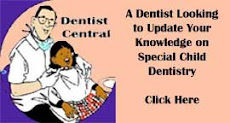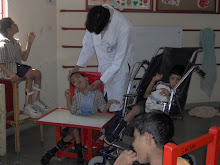One of the simplest ways to overcome the problem of patient access to the dental chair is by providing the treatment in the wheelchair itself, without transferring the patient. Conventional wheel chair based dentistry usually does not permit sitting down dentistry. The wheelchair is wheeled close to the instrument tray of the dental chair and the safety brakes are applied. The operator then stands behind the patient and is able to perform the necessary procedures.
Though greatly convenient to the patient this form of dentistry presents certain challenges to the operator. It may not always be possible to get adequate access because of constrains of space. The positioning of the suction may present a problem as the suction apparatus of a conventional chair is in the direction opposite to that of the patient. Similarly, alternate arrangements have to be made for the provision of a spittoon as the patient will not be able to reach the spittoon attached to the chair. Lastly the positioning of the patient is upright; this may pose a problem, especially when working on mandibular teeth where a more reclined position is favorable.
 The adjustable dental platform, the ramp allows the reclining of the wheelchair
The adjustable dental platform, the ramp allows the reclining of the wheelchair

 click on image to play video
click on image to play video






No comments:
Post a Comment